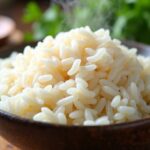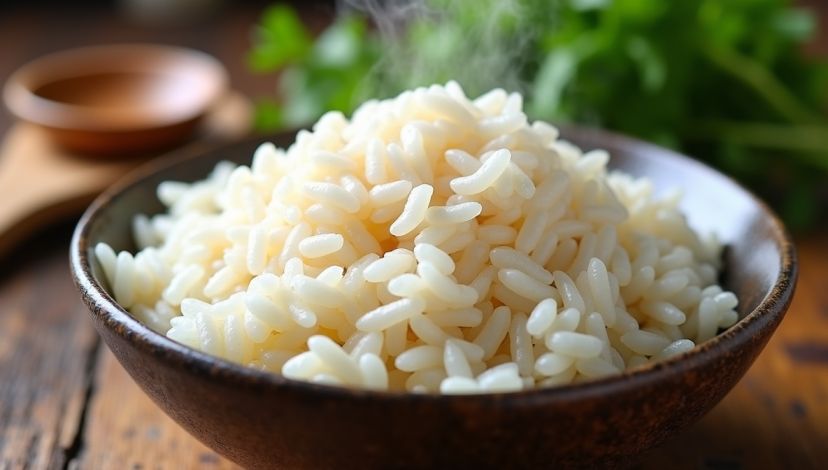It is vital for individuals on a ketogenic diet to select the right type of vegetables. When asking what vegetables are keto-friendly, it’s important to know that the keto diet focuses on low-carb, high-fat foods to stimulate the body to use fat instead of carbs as the source of energy. The key value of vegetables is to offer the necessary nutrients, fiber, and antioxidants without excessive ingestion of carbohydrates. Not every vegetable is fit for a keto diet since some contain higher amounts of carbohydrates.
In this blog post, we will explore what vegetables are keto-friendly, helping you make informed choices that keep you in ketosis without sacrificing taste or nutrition. We will also tell you what carbs the vegetables contain, how to incorporate them in your diet, and some tips on how to taste a variety of different foods. These details will help you understand how to follow the keto diet and still love your food.
Key Points:
- The vegetables that are keto-friendly are non-starchy and are low in carbs and high in fibre.
- Examples of good keto foods include leafy veggies and cruciferous vegetables.
- To have an effective ketosis, avoid the starchy vegetables.
Why Can Some Vegetables Be Better Suited to Keto Than Others?
All vegetables are not alike as far as carbohydrates are involved. Vegetables contain more sweeteners and starches than others, which may rapidly amplify your day-to-day carb levels and even take you out of ketosis. The net carbs in vegetables or the total carbs minus fiber tend to be minimal, as the fiber intake will not increase the sugar level in the bloodstream.
As an example, spinach and kale are leafy greens with very little carbs and had an abundant source of minerals and vitamins. Conversely, their root-based vegetables like potatoes and carrots contain more starch and are not advisable or only taken in small quantities in keto consumption.
The distinction is on the kind of carbohydrates used. Most non-starchy vegetables are high in fiber and slow-digesting carbs, and they also do not cause big swings in blood sugar levels. Starchy vegetables can be processed easily into sugars because they disturb the fat-burning condition that keto pursues.
This will help you feed your body with low-carb veggies with the necessary nutrients and keep within the limits of your allowable carbs. This and proportion lie to the success of keto dieting.
Which Low-Carb Vegetables Are The Best To Have In a Keto Diet?
Choosing the right vegetables is essential for anyone following a ketogenic diet. The keto diet focuses on eating low-carb, high-fat foods to encourage the body to burn fat for energy instead of carbohydrates. Vegetables play a vital role in providing essential nutrients, fiber, and antioxidants while keeping carb intake low. But not all vegetables are suitable for a keto diet because some contain higher amounts of carbohydrates.
In this blog post, we will explore what vegetables are keto friendly, helping you make informed choices that keep you in ketosis without sacrificing taste or nutrition. We will explain the carb content of various vegetables, how to include them in your meals, and provide tips to enjoy a variety of flavors and textures. Understanding these details will empower you to stick to your keto goals and enjoy your food at the same time.
Key Points:
- Keto-friendly vegetables are low in carbs and high in fiber.
- Leafy greens and cruciferous vegetables are excellent keto options.
- Avoid starchy vegetables to maintain ketosis effectively.
Why Are Some Vegetables More Suitable For Keto Than Others?
Not all vegetables are created equal when it comes to carbohydrate content. Some vegetables have more sugars and starches, which can quickly increase your daily carb intake and potentially knock you out of ketosis. Keto-friendly vegetables are generally low in net carbs — which means total carbs minus fiber — since fiber does not raise blood sugar levels.
For example, leafy greens like spinach and kale contain very few carbs but offer a rich supply of vitamins and minerals. On the other hand, root vegetables such as potatoes and carrots have higher starch content and should be avoided or eaten in very small portions on a keto diet.
The difference lies in the type of carbohydrates present. Non-starchy vegetables contain mostly fiber and complex carbs that digest slowly, helping you maintain steady blood sugar levels. Starchy vegetables break down quickly into sugars, which can interfere with the fat-burning state keto aims for.
By focusing on low-carb veggies, you provide your body with the nutrients it needs without exceeding your carb limit. This balance is key to successful keto dieting.
What Are The Best Low-Carb Vegetables To Include In A Keto Diet?
Vegetables have a perfect place in a keto lifestyle, and the list is very long. These are some of the best choices that you can incorporate on a regular basis:
| Vegetable | Net Carbs per 100g | Key Nutrients |
|---|---|---|
| Spinach | 1.4g | Vitamins A, C, K, and Calcium |
| Kale | 3.6g | Vitamins A, C, K, Calcium |
| Broccoli | 4g | Fiber, Vitamin C, Folate |
| Cauliflower | 3g | Fiber, Vitamin C, Potassium |
| Zucchini | 2.1g | Vitamin C, Manganese |
| Asparagus | 2g | Folate, Vitamin K |
| Green Beans | 4g | Fiber, Vitamins A & C |
Although these vegetables are low in net carbs, they are rich in nutrients, and they are the best addition to your plate to have a low-carbohydrate meal.
Tip: Count the carbs – and keep count of the servings by measuring the serving sizes.
Reminder: One should attempt to eat different types of vegetables and capture a variety of nutrients.
What Can You Do To Have Low-Carb Vegetables That Are Keto-Friendly?
Vegetables can impact the carb impact of foods with food preparation. Steaming, roasting, sauteing, or raw veggies in salads are the best methods of cooking keto-friendly food. When trying to add breading or coating of vegetables using ingredients and high-carb sauces or batters, this will be adding unnecessary carbohydrates.
As another example, cauliflower roasted in olive oil and garlic can be a delicious side dish that will maintain carbs at a low point, and flavors at a high level. Zoodles (zucchini noodles) are a superb alternative to pasta and add fiber and vitamins, as well as a lack of carbs found in traditional pasta dishes.
Leafy greens mixed salads with cucumbers and asparagus may be dressed using low-carb dressing, such as olive oil and lemon juice. To retain nutrients, broccoli or green beans can be stir-fried on a medium-high pan using oils in the keto diet, like coconut oil or avocado oil, which makes them crunchy.
You can have a wide selection of keto-friendly menu by preparing vegetables simply and in a creative way.
Which Vegetables Are to Be Avoided or Limited on the Keto Diet?
Although most vegetables are keto-approved, some of them have a high content of starch or sugar and should not be consumed to control ketosis. These include:
| Vegetable | Net Carbs per 100g | Notes |
|---|---|---|
| Potato | 15g | High starch, not keto-friendly |
| Sweet Potato | 17g | High carb, avoid on keto |
| Corn | 19g | Very high carb content |
| Carrots | 7g | Moderate carb, limit intake |
| Beets | 7g | Higher sugar, eat sparingly |
Consuming such vegetables in high quantities may make your carb intake shoot through the roof and also break down ketosis. Unless you insist on a small amount, take them sometimes and in minute quantities.
Notice: Although not all vegetables are bad, you need to consider their carb count on the keto.
Reminder: Carb counting apps can be used and remind your intake as well as not to exceed the limits.
Can You Eat Vegetables On a Keto Diet?
Although the vegetables that are keto-friendly are low-carb, there is a consideration on portion control. Even low-carb vegetables can cause a cumulative effect which will affect ketosis when taken in large quantities. A good way to balance your veggies with your ideal daily carb intake of 20-50 grams or net carbs a day.
The fiber in vegetables is good for the digestive system and body in general; however, counting net carbs (the total carbs minus fiber) is how you can remain on track. There is no need to shun vegetables; just make sure you eat them in moderation.
As an example, spinach has net carbs of only 1.4 grams per 100 grams, so you can serve a big helping. But even the vegetables that are low carb, such as broccoli or cauliflower, can amount to a lot when consumed in large amounts.
Do not avoid eating vegetables which contain much-needed vitamins and minerals, which will aid in hunger fulfillment. Just count the calories and monitor the consumption of total carbohydrates to impact ketosis efficiently.
Conclusion
The secret to successful dieting with a ketogenic diet is to select the right kinds of vegetables. Plant-based sources with high fiber content, such as leafy greens, broccoli, cauliflower, zucchini, and asparagus, should be focused on to maintain carbohydrate constraints without compromising on essential nutrients. Do not eat starch vegetables such as potatoes, sweet potatoes, and corn because they increase your carb levels fast.
There are also some roles of preparation and portion control in keeping your meals ketogenic. By understanding what vegetables are keto-friendly and how to incorporate them into your diet, you can enjoy a healthy, balanced, and delicious keto lifestyle.
Don’t forget to measure serving portions, rotate veggies to get the most out of them, and be aware of how much carbs you have. These are the easy habits which will leave you on track to succeed to meet your keto targets and do not feel limited or bored.
FAQ’s
Do I have to use frozen vegetables in preparing keto meals?
Sure, you can use frozen vegetables such as spinach, broccoli, and cauliflower conveniently, as long as you don’t add extra sauces or carbs.
Which are the keto-acceptable low-carb vegetables?
The most pocket-friendly and beneficial to keto are leafy greens such as spinach, kale, and the cruciferous vegetables like broccoli and cauliflower.
Do keto diets allow carrots?
Carrots contain more carbs than other keto vegetables; therefore, you should limit their consumption or eat them in small portions.
Do all green vegetables fit into the ketogenic diet?
The majority of green vegetables are crab-free and keto, but make sure to check the carb levels and quantity you consume.
What is the maximum amount of vegetables that I can consume on keto per day?
Your daily carb allowance determines it, but in most cases, you can eat up to 2–3 cups of low-carb vegetables and still stay in ketosis.













